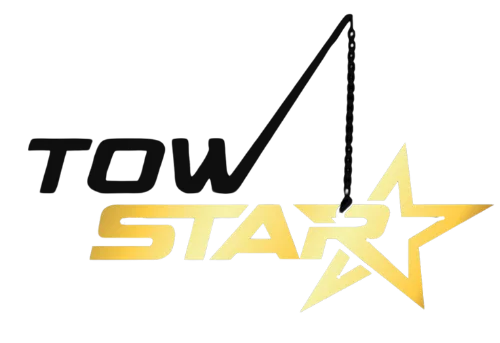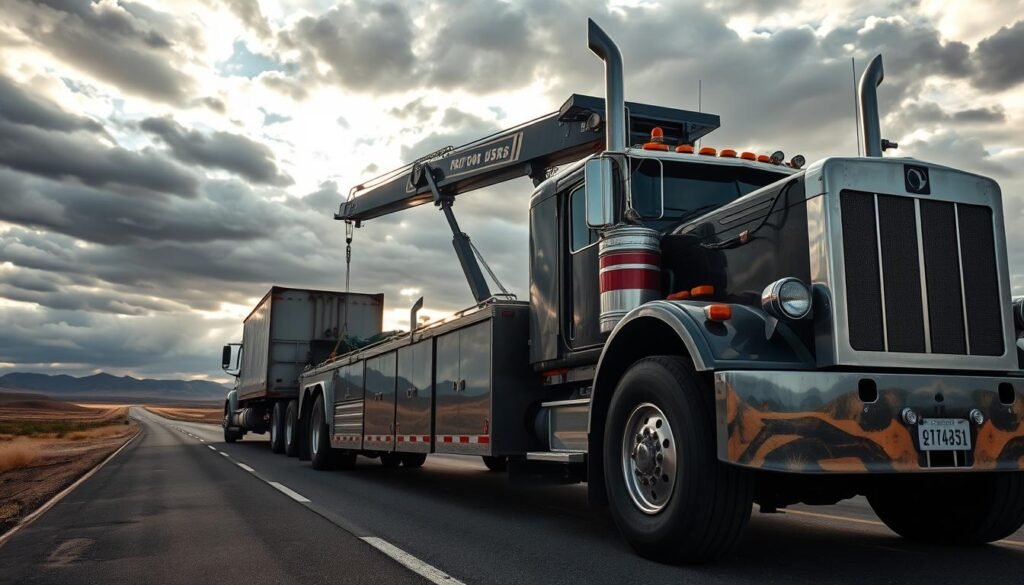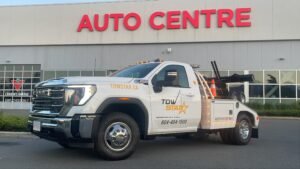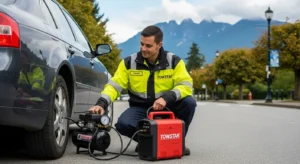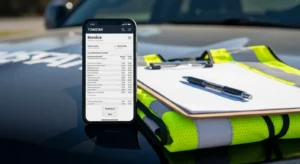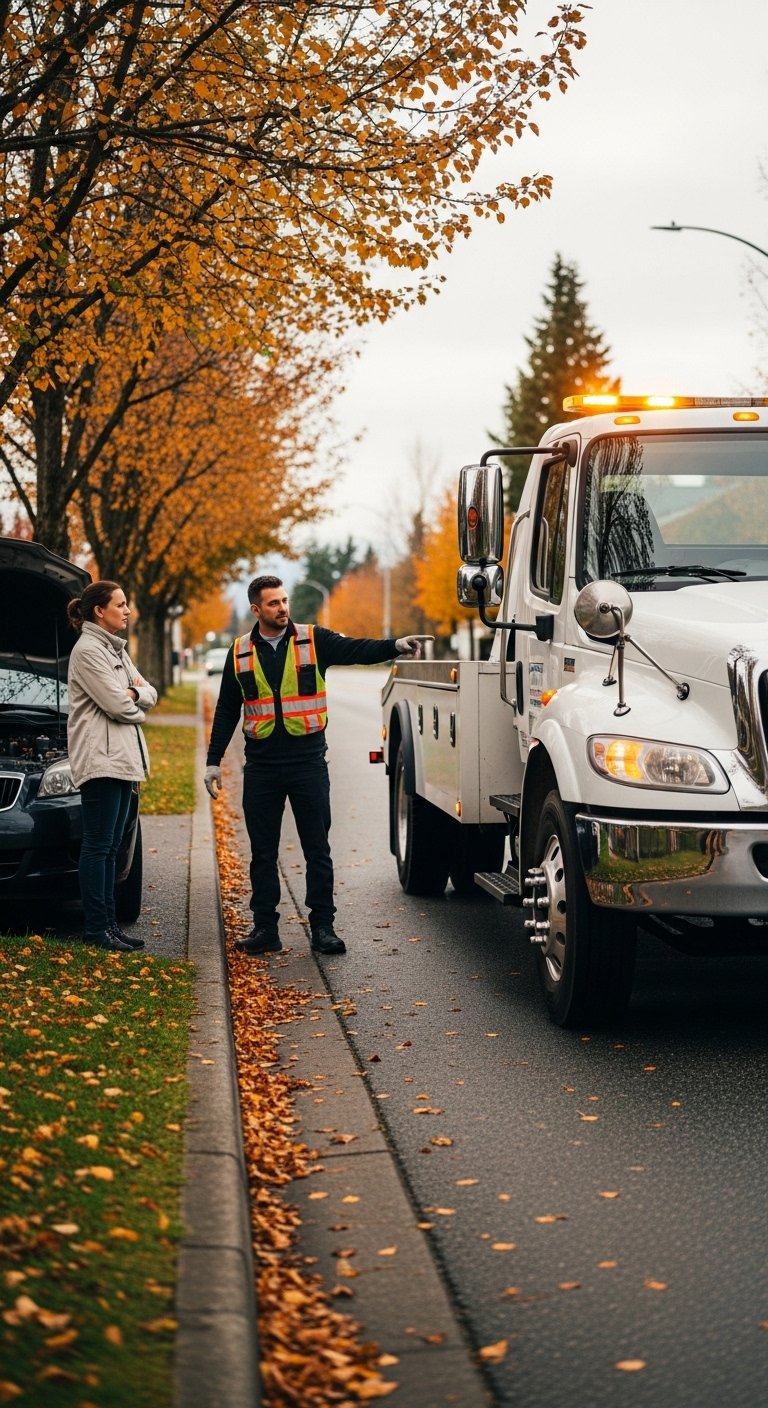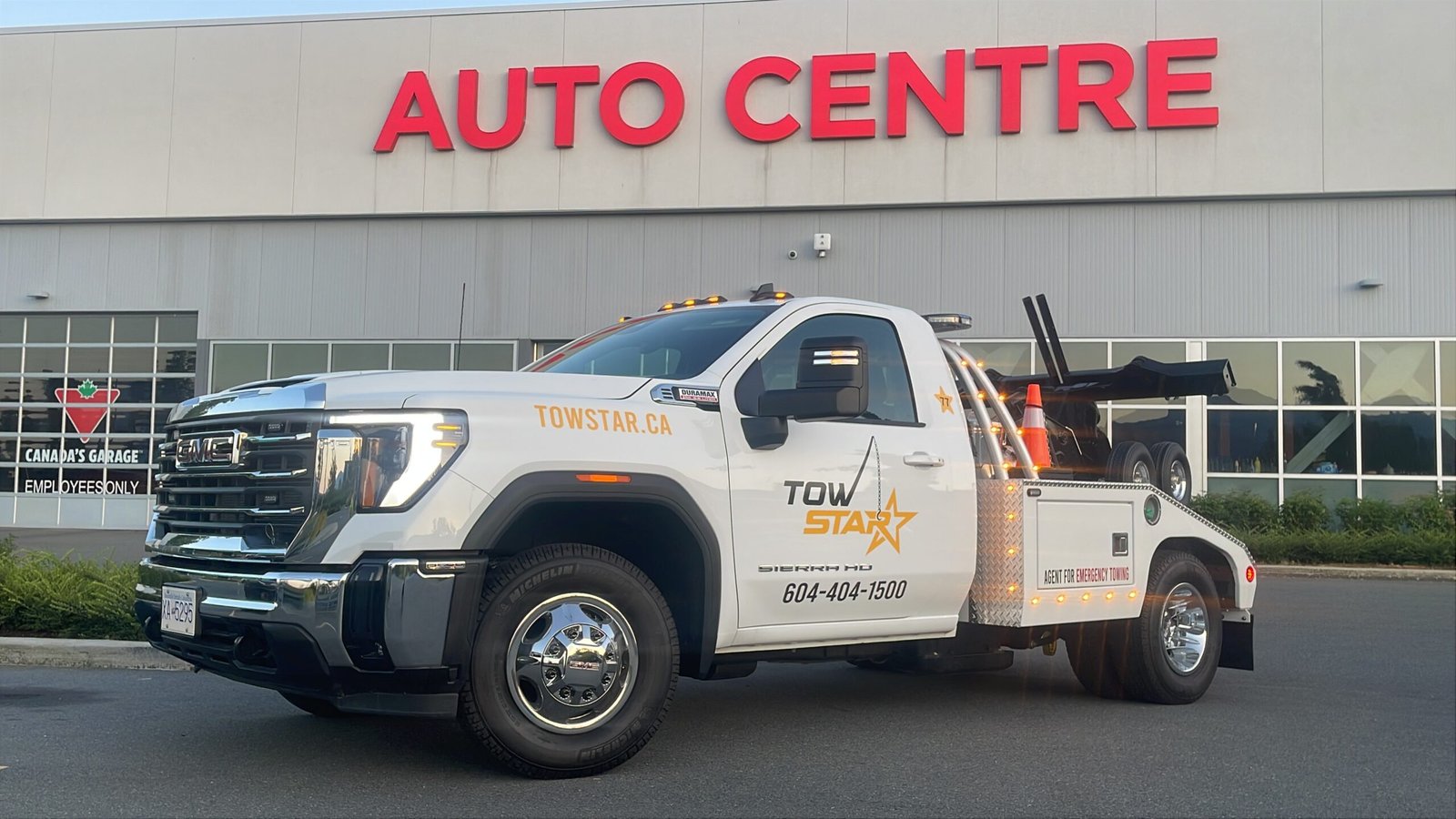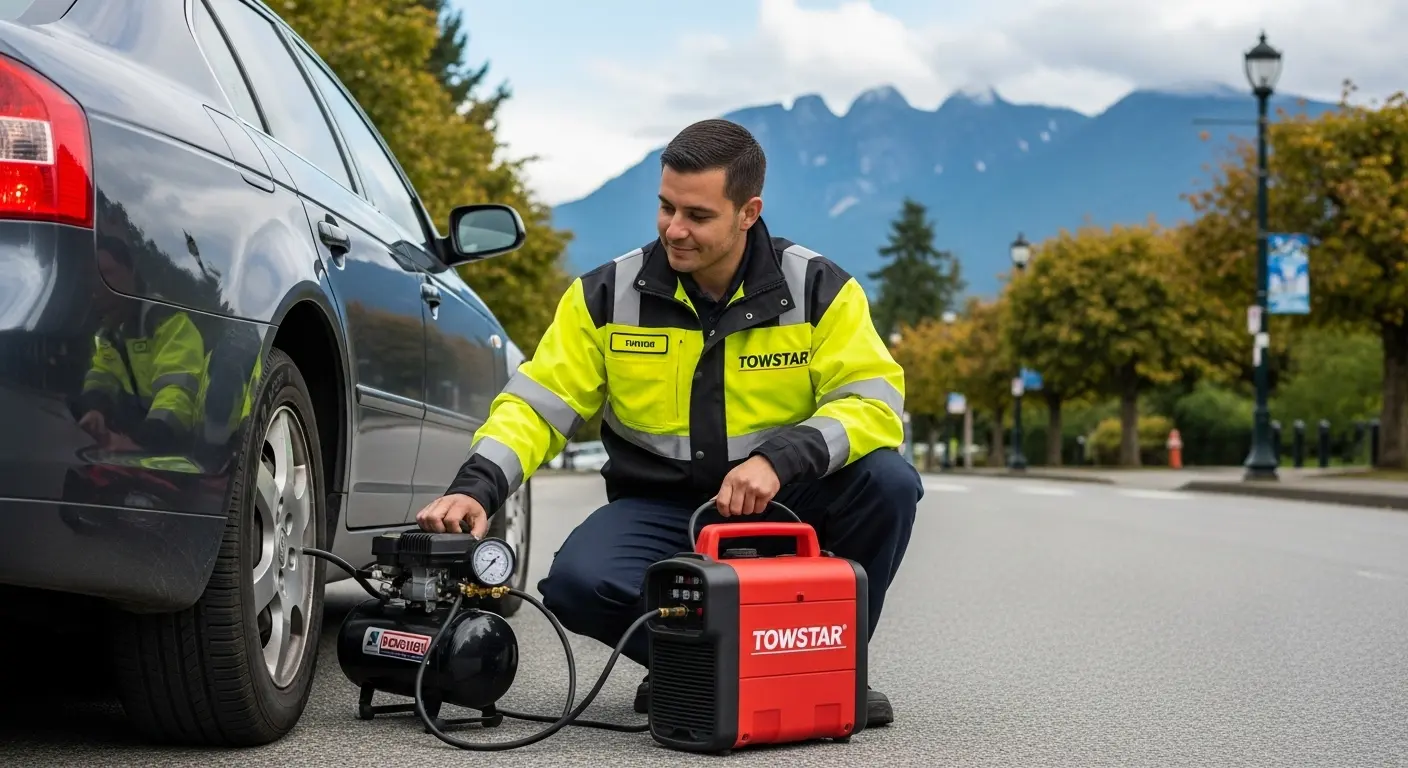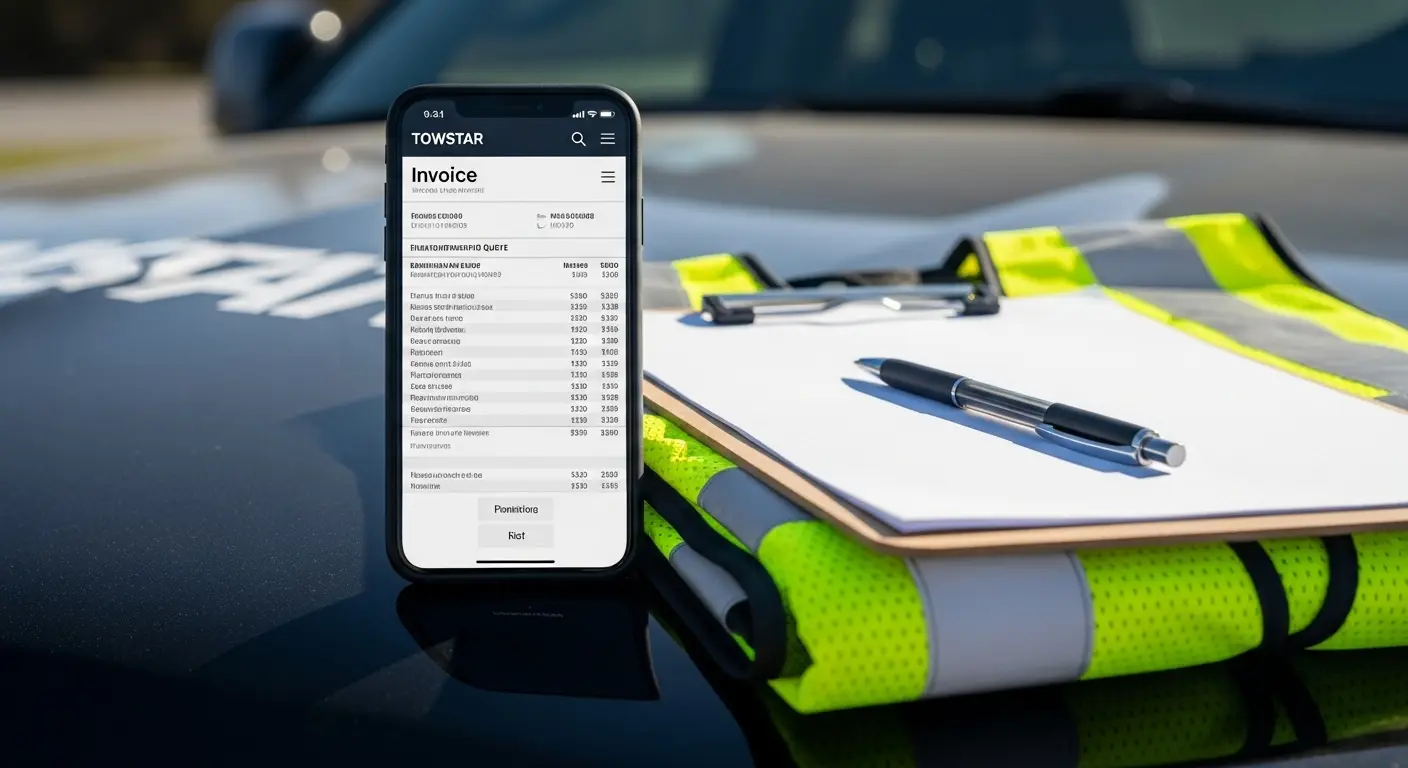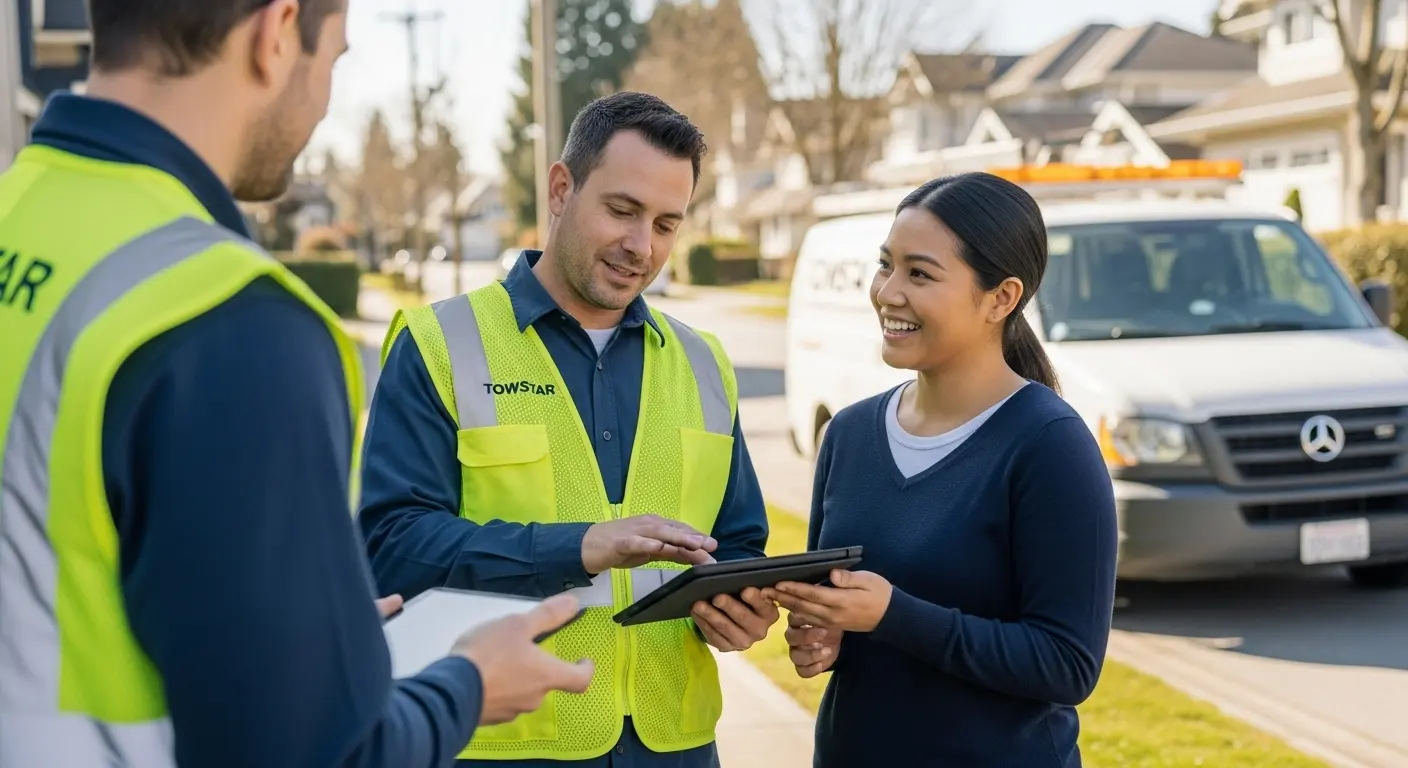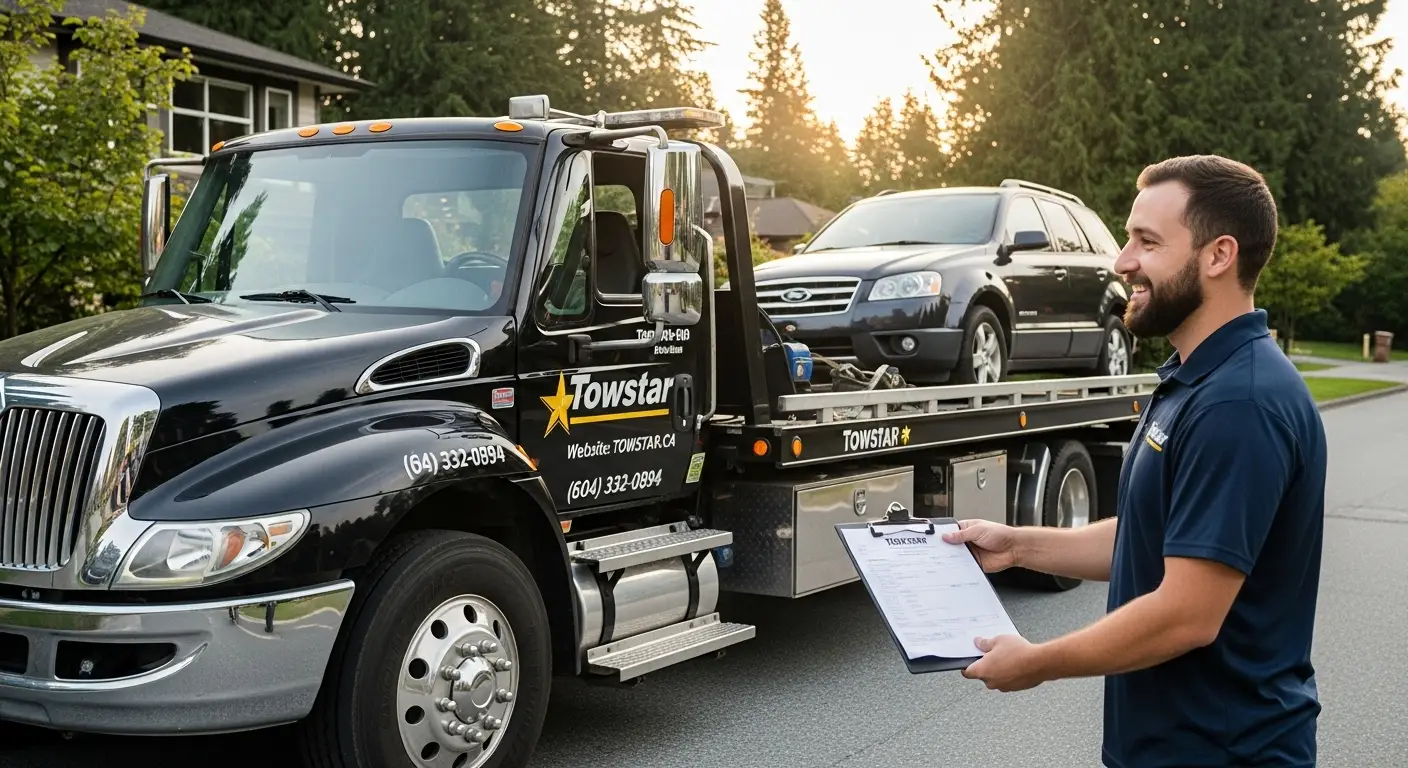When dealing with big recoveries or tricky roadside issues, the right gear is key. You need clear numbers and real-world insights for smart choices. Knowing 2025’s prices for specialized recovery vehicles is essential, whether you’re upgrading or tackling tough jobs.
New models cost from $200,000 to over $650,000, based on features like hydraulic systems and boom reach. For those watching their budget, a 3-5-year-old Freightliner 114SD with a 50-ton rotator averages $180,000–$200,000 in Canada. These machines are not just expensive—they’re designed to handle tough terrain, industrial accidents, and harsh weather that lighter trucks can’t.
Key Takeaways
- New rotator trucks cost 2–3× more than standard rigs but last decades with proper care
- Specialized attachments (like underlift cranes) add $15,000–$40,000 upfront
- Canadian winters demand corrosion-resistant builds—budget 8–12% extra for durable coatings
- Pre-owned units save 20–30% if maintenance records are verified
- Fuel-efficient models cut long-term costs by 18–22% in provinces with high diesel prices
Why invest in a rotator? Think about untangling a rolled tractor-trailer on the Trans-Canada Highway. A basic tow rig might take hours. But a 50-ton rotator can do it in minutes, saving time, reducing fines, and keeping crews safe. We’ll show you every dollar’s worth so you understand your investment.
Understanding Heavy Duty Tow Trucks
When you face a tough roadside emergency, a heavy-duty tow truck is your hero. These trucks are not just big; they’re also smart and strong. They’re made for Canada’s toughest conditions. Let’s look at why they’re key for big jobs.
What Makes These Trucks “Heavy Duty”?
Heavy-duty trucks have a gross vehicle weight rating (GVWR) of 26,001 pounds. That’s like carrying three elephants! Modern trucks can even handle 60-ton rotators. They can right over semi-trailers like toys.
Features That Handle Real-World Challenges
Canadian winters are tough. Here’s what makes heavy-duty trucks different from regular tow trucks:
- Boom reach extending 30+ feet for tricky angles
- Air cushion systems ($30,000-$50,000 add-ons) that lift vehicles without damage
- All-terrain tires gripping icy Alberta highways
- Heated hydraulic lines that won’t freeze at -40°C
When You Absolutely Need Heavy-Duty Help
These trucks are heroes when others can’t help. Last winter, a 50-ton rotator saved a cement mixer in Quebec. They handle:
- Overturned transport trucks blocking Highway 401
- Construction equipment stuck in Northern Ontario mud
- Bus recoveries during Maritime snowstorms
It’s not just about power. It’s about precision. The right boom placement can save a $200,000 truck.
Factors Influencing Cost
Many things affect the cost of heavy recovery gear. This includes the winch’s power and your location. Let’s explore how these factors impact your spending.
Equipment and Specifications
Your truck’s strength is key. A 75,000-lb winch rating means you can handle big jobs. But, it’s not just about power.
Features like thermal cameras ($5,000-$10,000) make night recoveries easier. They turn darkness into daylight.
| Feature | Typical Specs | Cost Influence |
|---|---|---|
| Winch System | 50,000-75,000 lbs | +$8,000-$15,000 |
| Boom Length | 24-32 feet | +$4,500/ft |
| Thermal Imaging | Standard vs. HD | +$5,000-$10,000 |
Brand and Model Variations
Rotators differ in quality. Some use military-grade steel, while others focus on fuel efficiency. You’re not just buying a truck.
You’re choosing between:
- 5-year vs. 10-year chassis warranties
- Basic vs. climate-controlled cabs
- Manual vs. automated stabilizer systems
Geographic Location Impact
Why does the same rig cost 12% more in Vancouver than Winnipeg? Three reasons:
- Shipping fees from Ontario factories
- Maritime provinces’ tax incentives
- Alberta’s high demand for oil field recoveries
Pro tip: Calgary dealers often stock more off-road packages than Halifax suppliers. Know your terrain before negotiating.
Average Costs of Heavy Duty Tow Trucks in 2025

Let’s talk numbers – because guessing your budget for commercial towing equipment shouldn’t feel like solving a Rubik’s Cube blindfolded. Whether you’re expanding your fleet or replacing an aging rig, we’ll break down 2025 pricing so you can make confident decisions.
Breakdown of Initial Purchase Prices
New 50-ton rotator trucks range from $250,000 to $650,000 CAD. The price difference is like buying a pickup truck. Base models are basic, while premium packages add extra features. Here’s what impacts your bottom line:
| Vehicle Age | Price Range (CAD) | Typical Features |
|---|---|---|
| New | $250k – $650k | Warranty, latest safety tech |
| 5-10 years | $180k – $300k | Proven reliability |
| 15+ years | $100k – $130k | Higher repair frequency |
Leasing vs. Buying Costs
Leasing a heavy-duty tow truck can cut upfront costs by 60-80%. But is it right for your commercial towing business? Consider these factors:
- Lease Pros: Lower monthly payments • Tax deductions • Easy upgrades
- Buy Pros: Full ownership • No mileage limits • Long-term savings
A 10-year lease might cost $8,500/month vs $12,000/month loan payments. Crunch your numbers – break-even typically happens at 6-8 years for most Canadian operations.
Maintenance and Operating Costs
That $650k price tag? Just the start. Keep your rig road-ready with these annual averages:
| Expense | Frequency | Cost (CAD) |
|---|---|---|
| Boom cylinder replacement | Every 5-7 years | $4,500-$5,500 |
| Full synthetic oil change | Quarterly | $300-$400 |
| Tire replacement (set of 6) | Every 3 years | $8,000-$11,000 |
Pro Tip: Budget $15k-$20k annually for unexpected repairs. Older trucks? Double it. Regular maintenance is cheaper than downtime – treat your tow rig like the profit generator it is!
Types of Heavy Duty Tow Trucks
Knowing your tow truck types is key when you need extra power. Whether you’re dealing with icy roads in Alberta or hauling heavy equipment in Ontario, the right truck saves time and money. Let’s look at the heavy-duty machines ready for Canada’s toughest towing jobs.
50-Ton Rotator Overview
The 50-ton rotator is a versatile tool for tough recoveries. Its boom can rotate 360 degrees, making it easy to get around obstacles. It also has an underlift system that safely lifts vehicles without damaging them. This is great for delicate jobs like rescuing luxury RVs or electric trucks.
- Handles up to 75-ton lifts (25% more than standard wreckers)
- Works on uneven terrain common in Canadian oil fields
- Protects sensitive cargo with its gentle underlift tech
Other Common Configurations
Not every job needs a rotator’s strength. Here’s a quick guide to other setups:
- Hook & Chain: A budget-friendly choice for short-distance hauls
- Wheel-Lift: Fast roadside pickups, perfect for city breakdowns
- Integrated Tow: A mix of boom and wheel-lift for highway patrol needs
Specialty Heavy Duty Trucks
Some jobs need special solutions. These unique rigs can handle what regular trucks can’t:
| Type | Capacity | Best For |
|---|---|---|
| Landoll | 40-60 tons | Transporting construction equipment |
| Lowboy | 80+ tons | Oversized mining machinery |
| Military Spec | 100 tons | Government/defense contracts |
Your choice depends on where and how you work. Logging roads need different gear than Toronto’s Gardiner Expressway. If unsure, talk to a certified heavy-duty specialist. They can help you avoid buying more truck than you need!
Financing Options for Purchases
Smart financing keeps your roadside assistance fleet running smoothly. It doesn’t have to break the bank. Whether you’re growing or updating your equipment, knowing your options is key. Let’s explore the best ways to fund your next heavy-duty tow truck.
Loans and Financing Plans
In Canada, many operators get loans for heavy-duty trucks from commercial lenders. Rates are 7-10% for $600,000 loans, with terms up to 84 months. Here are some important points to consider:
- Down payments start at 15-20%
- Insurance costs $15,000-$25,000 a year
- Pre-approval helps avoid rate increases
Longer terms mean smaller monthly payments but more interest over time. Choose a term that fits your workload. Busy fleets often prefer 7-year plans for easier budgeting.
Grants for Commercial Vehicles
Canada has programs to help with the costs of essential services. The Commercial Vehicle Innovation Fund covers 15% of new rotator truck costs if they’re eco-friendly. Plus, provincial grants can save you even more:
| Province | Grant Type | Max Amount |
|---|---|---|
| Ontario | Green Fleet Upgrade | $18,000 |
| Alberta | Rural Service Support | $12,500 |
| Quebec | Bilingual Equipment | $9,000 |
Apply early, as these funds are quickly taken during peak seasons.
Leasing Options Explained
Leasing is good if you need new models every 3-5 years. Leases usually include:
- Full maintenance coverage
- Discounts on roadside assistance
- Options to upgrade to newer tech
Be aware of mileage limits and wear-and-tear fees. Compare lease costs to buying. Buying might be better if you’ll keep the truck over 60 months.
Insurance Expenses for Heavy Duty Tow Trucks
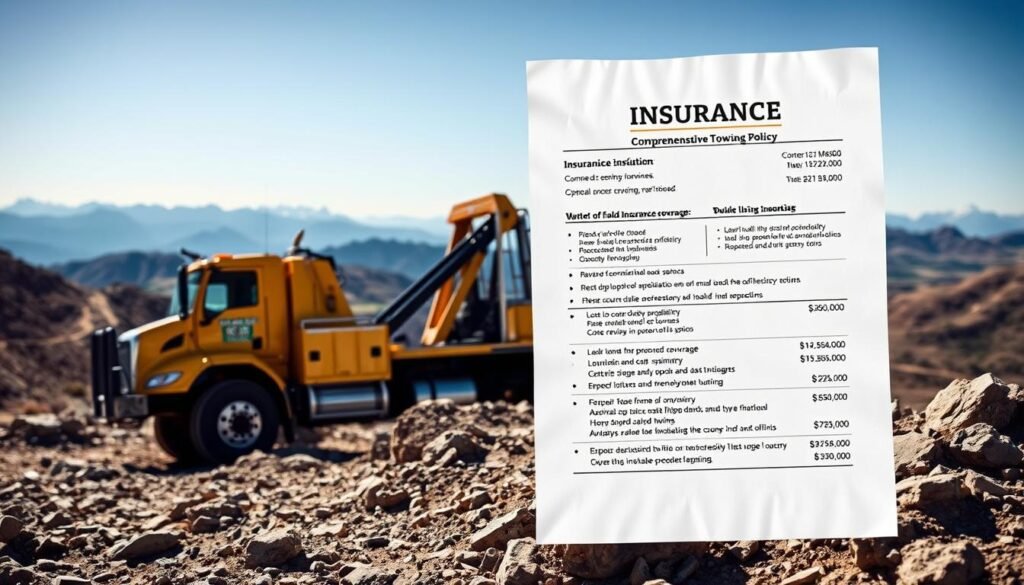
Protecting your heavy duty tow truck is essential. It’s not just smart, it’s necessary. Whether you’re hauling wrecked semis or off-roading, the right insurance is key. It protects your business from unexpected costs. Let’s explore what coverage you need, the costs involved, and how to manage those expenses.
Types of Coverage Needed
Not all insurance fits heavy duty rigs. Here’s what you really need:
- On-Hook Liability: Covers damages if a vehicle slips off your tow rig mid-transport.
- Environmental Cleanup Protection: Critical for spills or leaks during off-road towing in sensitive areas.
- Collision & Comprehensives: Repairs for your truck, whether it’s a fender-bender or wildlife collision.
Average Insurance Costs
Expect to pay between $15,000 and $25,000 annually for solid coverage. Off-road towing operations often face 30-40% higher premiums. This is due to increased risks like uneven terrain and remote recovery sites.
| Factor | Impact on Premium | Example |
|---|---|---|
| Off-Road Operations | +30-40% | Alberta Oil Fields |
| Safety Certifications | -10-15% | Ontario Highway Services |
| Driver Experience | Up to -20% | 5+ Years with Clean Record |
Factors Affecting Insurance Rates
Your premium isn’t fixed. Several factors determine what you’ll pay:
- Location: Alberta’s oil fields cost more to insure than Ontario highways.
- Safety Gear: Roll cages, GPS trackers, and certified winches can lower rates.
- Claims History: Frequent claims? Insurers see higher risk.
Pro tip: Bundle policies or join industry groups for group discounts. Small tweaks add up!
Cost Comparison by Region
Where you park your business in Canada can affect your tow truck budget a lot. Prices vary a lot between provinces and even between cities and rural areas. This is true, even when looking for wheel-lift systems or rotators. Let’s see where your money goes further and where you might find hidden costs.
Canadian Urban vs. Rural Pricing
In Toronto, the busy streets mean higher prices for heavy-duty rigs. You might pay 15-20% more than in Thunder Bay. This is because urban dealers have higher costs, while rural sellers have lower demand.
A used wheel-lift truck costs $48,000 in Ottawa but only $40,000 in Sudbury. A tip: Look for rural dealerships near cities. You can find good deals on urban-grade equipment at lower prices.
Provincial Variations in Costs
In Alberta, the oil fields lead to lower rotator truck prices, 12% less than in Ontario. But in Saskatchewan, the limited inventory means higher prices for specialty gear. Here are some price snapshots for each province:
| Province | Used Wheel-Lift Range | Rotator Premium |
|---|---|---|
| Ontario | $42,000-$50,000 | +22% vs. base |
| Saskatchewan | $46,000-$54,000 | +18% vs. base |
| Alberta | $38,000-$45,000 | +15% vs. base |
Exchange Rates and Foreign Markets
A strong Canadian dollar makes U.S.-built trucks attractive in some areas. In Vancouver, buyers save 18% on imports from Washington when the CAD is over $0.78 USD. But in Manitoba, the costs of transporting trucks through the Rockies can cancel out these savings.
Always consider:
- Current exchange rates
- Import duties (avg. 6.1% for commercial vehicles)
- Provincial sales tax differences
That $45,000 Montana wheel-lift could cost $53,000 CAD in Ontario. Use apps to track currency rates and plan your purchases wisely.
Depreciation Rates and Resale Values
Your heavy-duty recovery vehicle is a smart investment. Unlike light-duty trucks, which lose 20-30% of their value in a year, these vehicles only depreciate 10-15% annually. This means you keep more money when it’s time to upgrade or sell.
Understanding Depreciation in Heavy Equipment
Depreciation for heavy-duty gear works differently. Unlike cars, these trucks keep their value well. Factors that slow down depreciation include:
- Built-for-purpose designs that stay relevant for decades
- High replacement costs for new models
- Strong demand from smaller towing companies
Resale Market for Used Tow Trucks
Canada’s used recovery vehicle market is thriving. A 7-year-old 50-ton rotator can sell for around $130,000, nearly half its original price. Location greatly affects resale value:
| Province | 5-Year-Old Truck Value | Key Advantage |
|---|---|---|
| Alberta | 73% of original price | Oil industry demand |
| Quebec | 68% of original price | Government fleet upgrades |
| Ontario | 70% of original price | High population density |
Factors Affecting Resale Prices
Want to get top dollar for your truck? Focus on these value-boosters:
- Air cushion systems – adds 12-15% to resale
- Complete service records – buyers pay 8% more
- Climate-controlled cabs – hot in prairie provinces
Time your sale right – upgrade right before major provincial safety regulation changes. This lets you sell while older models are legal, but new buyers face upgrade costs.
Customization and Upgrades
Thinking of upgrading your tow truck? Let’s explore which mods are worth your money. Whether you’re driving on icy Alberta roads or fixing vehicles in Ontario’s cities, the right upgrades can make a big difference. Here’s how to improve your truck’s performance without overspending.
Popular Upgrades for Heavy Duty Tow Trucks
Not all upgrades are the same. Focus on these top mods that Canadian operators trust:
- Multi-Function Wheel-Lift Systems ($10K–$20K): Turn your wheel-lift into a recovery powerhouse with modular kits. Add grapples, stabilizers, or ice-melting attachments.
- Auxiliary Power Units (APUs) (~$150K): Cut fuel costs by 80% during long waits. Great for overnight jobs in Yukon’s cold.
- Synthetic Winch Ropes: 30% lighter than steel, yet can pull 50 tons. Perfect for precise recoveries in tight spots.
- Aluminum Wheel-Lifts: Save 10% on fuel without losing strength. Plus, no rust on your client’s fancy SUV.
Impact on Cost and Performance
Smart upgrades can save you money and boost performance quickly. Here’s how these popular mods compare:
| Upgrade | Cost Range (CAD) | Annual Savings | Recovery Success Boost |
|---|---|---|---|
| APU Installation | $140K–$160K | $12K+ in fuel | 15% faster response |
| Aluminum Wheel-Lift | $28K–$35K | 8–10% fuel efficiency | 20% less downtime |
| Synthetic Rope Kit | $4K–$6K | $800/yr maintenance | 40% fewer snags |
Pro tip: Pair aluminum wheel-lifts with synthetic ropes for top cold-weather performance. Your hands will appreciate it during -40°C repairs.
Finding Reliable Customization Services
Not all shops can handle heavy-duty mods. Here’s how to avoid mistakes:
- Look for CEPA (Canadian Equipment Professionals Association) certification
- Demand 2+ years warranty on structural changes
- Check for cold-weather testing reports (-50°C rated)
- Ask for client references in your province
Top shops in Alberta and Quebec now offer demo days. Test upgraded wheel-lifts on simulated ice slopes before buying!
Maintenance and Repair Costs
Keeping your heavy-duty tow truck in top shape is key. It’s not just about fixing problems, but preventing them too. Whether you’re driving in Toronto’s winter or Alberta’s summer, regular maintenance saves money and time. Here’s what you need to know to keep your truck and wallet happy.
Routine Maintenance Requirements
Maintenance is like brushing your teeth—it’s essential to avoid big costs. Climate affects maintenance needs in Canada. Here’s a quick guide:
- Monthly checks: Grease boom joints (extra important in salty areas)
- Every 250 hours: Check winch cables and winch rating
- Seasonal swaps: Switch to cold-weather hydraulic fluid in November
Plan to spend $7,000-$12,000 a year on maintenance. Keep track of service dates on your phone. This helps avoid costly repairs like engine rebuilds.
Average Repair Costs and Common Issues
Even with good care, parts can wear out. Hydraulic systems often fail under heavy loads. Watch for these issues:
| Issue | Average Cost | Warning Signs |
|---|---|---|
| Hydraulic leaks | $5,000-$8,000 | Slow boom movement, fluid puddles |
| Winch motor failure | $3,500+ | Grinding noises, inconsistent pulling power |
| Suspension wear | $2,800-$4,200 | Uneven tire wear, excessive bouncing |
Spotting issues early can save you thousands. Regular winch rating checks help prevent motor strain.
DIY vs. Professional Services
Doing maintenance yourself can save money. But know your limits:
- DIY-friendly: Oil changes ($300), air filter swaps ($80), light bulb replacements
- Leave to pros: Winch gearbox repairs ($1,200+), computer diagnostics, brake overhauls
Be careful with DIY jobs. A bad job can void warranties. If unsure, get a certified tech. They’ll keep your winch rating high and your insurance valid.
Future Trends in Heavy Duty Tow Truck Costs
Thinking about buying a heavy duty tow truck? Prices and tech are changing fast. Here’s what you need to know before 2030.
Technological Advances Affecting Prices
Electric rotators are on the horizon. Canada’s first zero-emission heavy duty tow trucks might arrive by 2028. They could cost 20% more but save on fuel by half.
Telematics systems track vehicle health. They could lower insurance by 15% by promoting safer driving.
Impact of Environmental Regulations
New emissions rules will raise prices by about $40,000 by 2030. Diesel models will face extra fees. But, hybrid options can save money.
Alberta fleets using biodiesel blends see 12% lower compliance costs.
Predictions for the Market in 2030
The market will grow 5.1% each year as old fleets are replaced. Automated load sensors and AI routing tools will become common. They’ll make driving easier.
Resale values might drop a bit as tech improves. But, well-kept 50-ton rotators should keep 60% value after five years.
Stay ahead by working with dealers who offer tech upgrades. Look into retrofit programs to keep your fleet up-to-date without buying new. The future is electric, but smart planning keeps you moving.
FAQ
What makes 50-ton rotators better for complex recoveries?
Rotators are great for tough jobs. They have 360° rotating booms and underlift systems. These systems handle jackknifed trailers or overturned rigs.
Their 75,000 lb winch rating and precise boom reach let you extract vehicles from ditches, bridges, or tight urban spaces. Standard wreckers often fail in these situations.
Why does a heavy duty tow truck cost more in Vancouver than Winnipeg?
Coastal salt air increases corrosion protection needs in Vancouver. Mountainous terrain demands stronger winches, adding up to 20% to the price.
In Manitoba, lower labor rates and cheaper storage facilities cut overall costs. This makes heavy duty tow trucks cheaper there.
How much should I budget for 2025 heavy duty tow truck maintenance?
Budget ,000+ annually for basic maintenance like boom cylinder replacements and hydraulic fluid changes. Winter operations add 15-20% costs for cold-weather greases and undercarriage washes.
This is to combat road salt damage.
Are wheel-lift systems worth upgrading for Canadian winters?
Absolutely. Aluminum wheel lifts save 10% on fuel compared to steel models. They also resist -40°C brittleness.
Pair them with synthetic winch ropes that won’t freeze stiff like steel cables during icy recoveries.
Can I get grants for buying a new rotator in Canada?
Yes! Federal and provincial programs like the Green Commercial Vehicle Fund offset up to 15% of costs for trucks with emissions-reducing tech. Alberta offers extra incentives for oilfield recovery vehicles.
Why does off-road towing insurance cost more in Alberta?
Oilfield recoveries require environmental cleanup coverage – a M+ policy add-on. Rocky Mountain terrain also increases rollover risks.
Unlike Ontario’s highway-focused policies that cost 22% less on average.
How long do heavy duty tow trucks hold their value?
Well-maintained 50-ton rotators retain 68-73% value after 5 years. Quebec buyers pay less due to higher supply.
Alberta’s energy sector keeps resale prices strong. Air cushion systems boost resale 8% nationwide.
Should I lease or buy my next recovery vehicle?
Leasing works if you upgrade tech every 3-5 years (84-month terms common). Buying beats leasing after 7 years.
A 0K rotator leased for ,500/month becomes cheaper to own outright by year 8.
What’s the real cost difference between US and Canadian-built tow trucks?
Exchange rates currently make US models 18% cheaper in BC but only 5% in Manitoba. Cross-border warranties often exclude hydraulic systems.
This is a ,000 risk if your underlift fails during a blizzard recovery.
How will electric tow trucks affect my 2030 fleet costs?
Early adopters face 40% price hikes but save K/year on diesel. Telematics in new models could lower insurance 15% by tracking safe driving.
Start budgeting now – emission rules may mandate electric recovery vehicles in cities by 2035.
